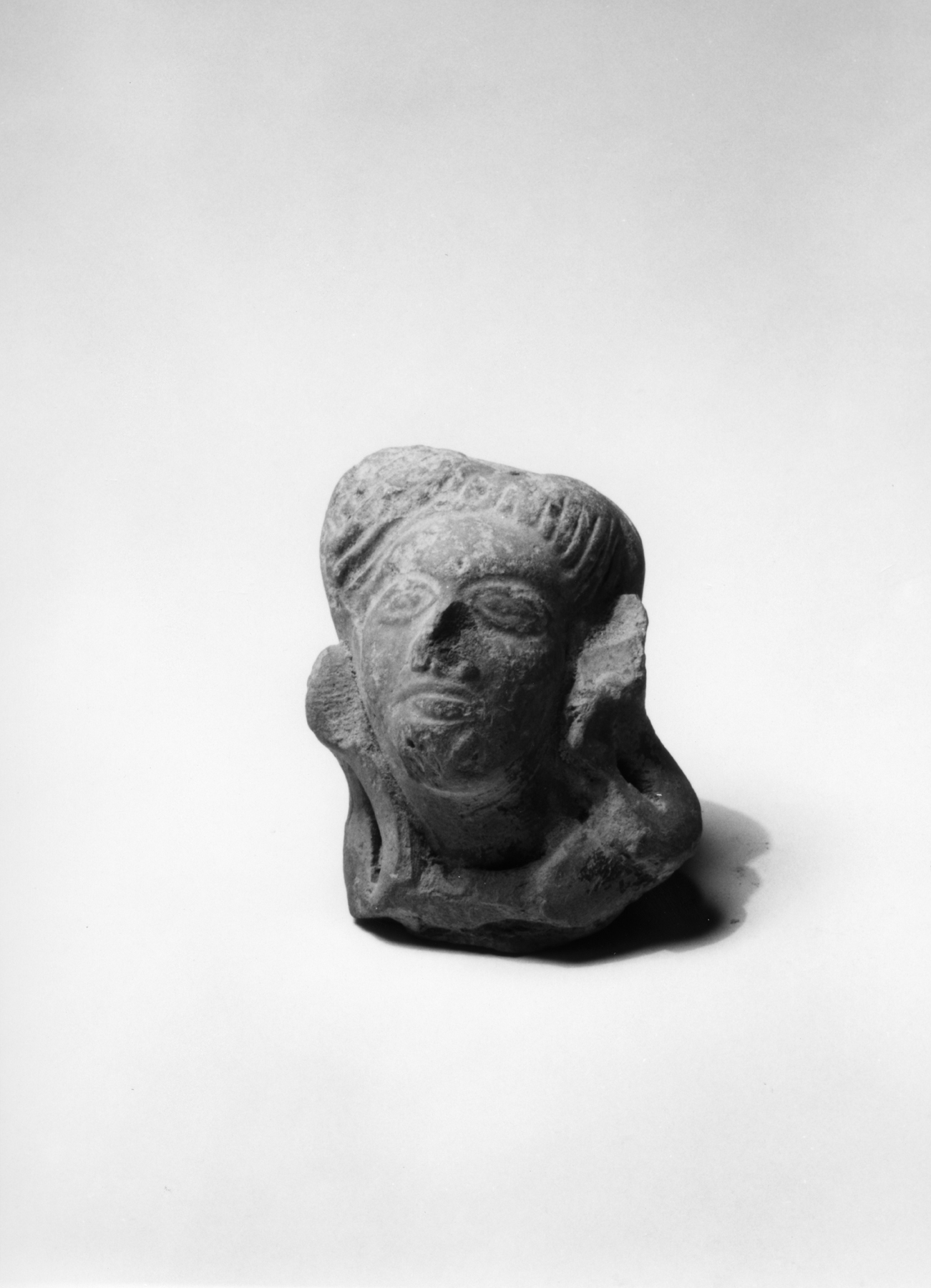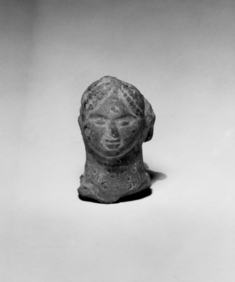Head of an Indian Village Deity
(India, Nepal, and Tibet)
Beginning as early as the 4th century BC, India played a vital role in international trade between the Roman, Parthian, and Chinese empires. Trade goods from the Far East included raw silk, gemstones, aromatic resins, and spices, particularly cinnamon, black pepper, and cloves. They traveled on different trade routes-the Silk-, Spice-, and Incense Routes.
Trade stimulated urbanization in India; this growth inspired new cultural and artistic practices. Much of the surviving art from this period in India-like this clay sculpture-represents divine figures. This piece has simplified facial features, large eyes, and an elaborate hairstyle. This style is typical of village artisans working during the rule of the Mauryan Empire (324-181 BC).
Provenance
Provenance (from the French provenir, 'to come from/forth') is the chronology of the ownership, custody, or location of a historical object. Learn more about provenance at the Walters.
Alexander B. Griswold, Monkton, Maryland [date and mode of acquisition unknown]; Walters Art Museum, 1979, by gift.
Exhibitions
| 2008 | Faces of Ancient Arabia: The Giraud and Carolyn Foster Collection of South Arabian Art. The Walters Art Museum, Baltimore. |
Conservation
| Date | Description | Narrative |
|---|---|---|
| 11/18/1983 | Examination | survey |
Geographies
India (Place of Origin)
Measurements
H: 2 x W: 1 5/8 x D: 1 5/8 in. (5.1 x 4.1 x 4.1 cm)
Credit Line
Gift of Alexander B. Griswold, 1979
Location in Museum
Not on view
Accession Number
In libraries, galleries, museums, and archives, an accession number is a unique identifier assigned to each object in the collection.
In libraries, galleries, museums, and archives, an accession number is a unique identifier assigned to each object in the collection.
25.61



